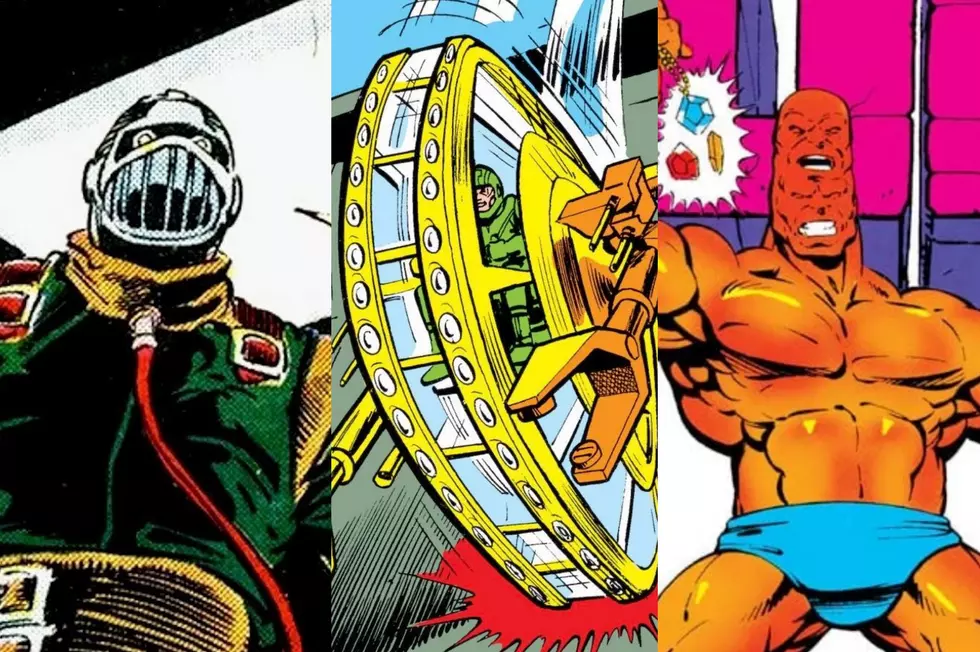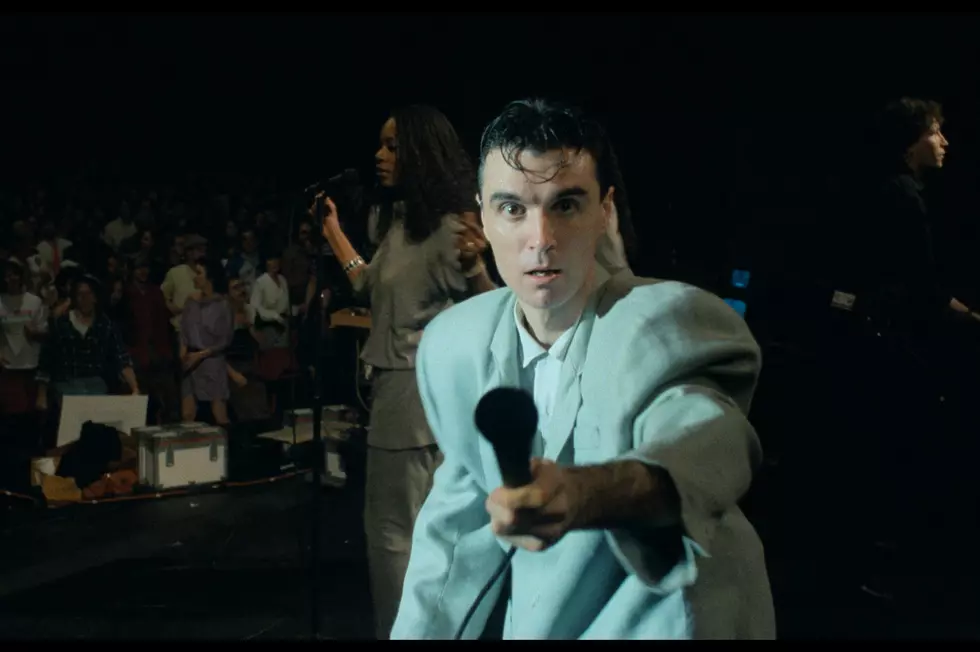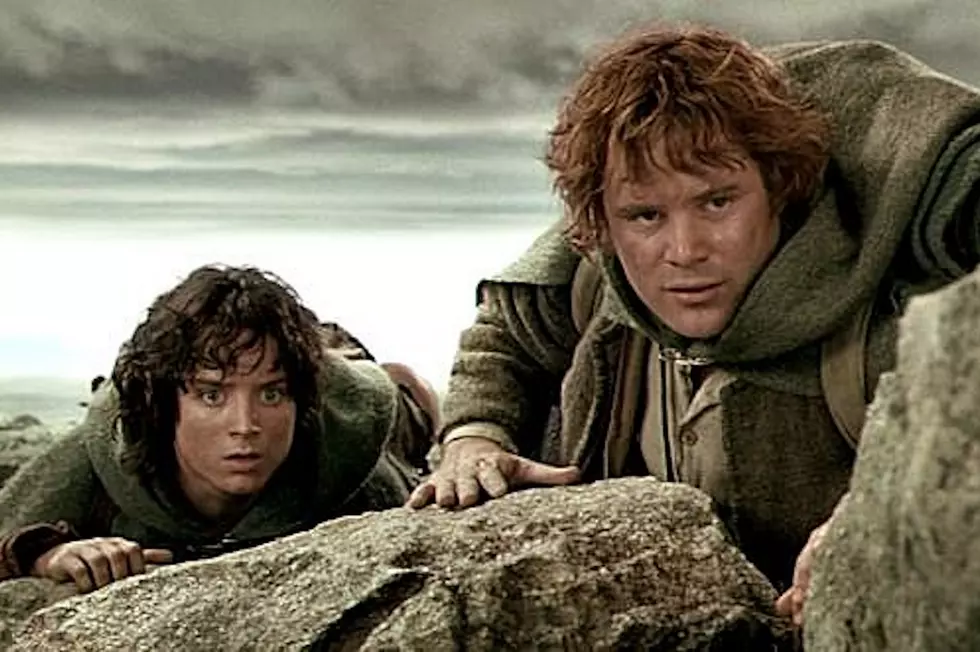
‘Bears’ Director Explains How Exactly They Got All Those Impressive Shots
The remarkable thing about 'Bears' is that it’s easy to forget that, yes, human beings had to shoot this intimate footage. It just all seems so personal, and it doesn’t seem possible that any of what we’re watching on screen could happen with the presence of humans anywhere nearby.
Filmed in the summer of 2013, 'Bears' tells the story of Skye, a mother of two young cubs – Scout and Amber – and her efforts to keep those two cubs alive over the course of a year. We are told (by the narrator, John C. Reilly) that many cubs do not live to see their first birthday, then we see why, as Scout and Amber are endangered by wolves, other hungry bears, and the natural elements of their surroundings.
But how in the world is this footage obtained? This isn’t just, “look, here’s a bear” – 'Bears,' instead, tells a narrative where the footage is purposely made to feel personal, and that the animals we are watching become actual characters. We spoke to co-director Alastair Fothergill, who explains how this process unfolds and how far he and his co-director Keith Scholey would stay with this project if, let’s say, the worst were to happen to one of the extremely cute animals we are so invested in watching.
When you're filming, I know the bears know you're there, but do the care you're there?
You know, every time we make these movies, the animals are different. And, so, it's a completely different challenge. This movie was filmed in Katmai National Park in Alaska, which is a wonderful place to film brown bears -- partly because there's a big population there -- but, most importantly, because they've never been hunted there and they've never gotten used to raiding human food. And they are completely relaxed around human beings ... and that's really important because we're not making a documentary, we're making a movie. You know, we write a classic 60- or 70-page Hollywood script -- just as you would for a normal drama, but, of course, our actors never read the script.
I know there's precedent for animals dying in your movies, but this feels different because we are focusing on two very adorable cubs. What happens if something bad would have happened? Would you have shown that?
You hit the nub of the question. And there's no doubt that bear cubs are wonderful; we don't have Teddy bears for no reason. And in the first year, typically, 50 percent of them die. So, we knew it was a real challenge. We had to choose a very, very good mother. And Skye really found us ... so we thought there was a really high chance the bear cubs would survive to the end.
No one wants to watch bear cubs die.
And we had some really close moments! When Scout was stuck out on the tide, we were really worried for him. That battle, when the big male attacks Skye, genuinely, we lost a cub for at least two hours. They disappeared and she couldn't find them and we couldn't find them. And I remember very vividly when Amber appeared, "Wow, that's fantastic. But where is Scout?" So, we were really, really worried and I don't know what we would have done. I think we would have pursued the story with one cub, but it would have been hard.
What if you had lost both?
To be honest, we would have had to say to Disney, "We may not have a movie."
When bears fight like that, what's usually the end result? Could Skye have been killed?
They do die. It depends. With males, males will go on fighting for a long time and they are often badly injured. With females, there's no way that a female is going to win a battle with a male brown bear. So, what she's doing is buying time and she's giving her cubs minutes to run away. And that's why, in the end, she gave up. You know, here in North America, bears have a pretty bad reputation and 'Grizzly Man' didn't help -- and it's not really fair. They're not dangerous animals as long as you don't muck around with them.
Is that why Timothy Treadwell was killed? Because he mucked around with them?
Well, amazingly, Timothy Treadwell was working in exactly the same place that we were. I mean, literally exactly the same place. I think-- there is a pressure. There is a drive in certain areas of natural history TV ... where it's all about "dangerous, dangerous, dangerous." And it becomes more about the person that it does about the animals. So there's various pressure to hype up. And I'm sure that Timothy was under pressure to get closer to bears than he should have done. He was very, very unfortunate. We probably met the same bear and there was never a single moment that we were scared of those bears.
Under any circumstance would you have ever considered interfering to save one of the cubs?
No. Never. There have been many moments in my career as a wildlife filmmaker where I've seen a starving animal, which I knew potentially I could feed. Basically the first rule of wildlife filmmaking is never to interfere. Because apart from anything else, if you start feeding an animal, that's a life commitment. So, no. Has it been hard at times? Absolutely, it has.
The scene you mentioned earlier where Scout is caught in the tide, that seems like that would be an especially tough one if he were to drown because it wouldn't be that hard to save him.
That was a tough one, and you're right. But, it's a slippery slope. Have I been tempted? Of course I've been tempted, but I never have and I never will. I think one of the important things about Disneynature movies is that they're fans of movies. And it's a big difference between watching something on the TV and watching on a massive screen with surround sound. And we have to be very, very aware that we don't want moms to feel they don't want kids to watch these movies, but at the same time, we really want to be true to nature.
There's one shot in particular I want to ask about: The film starts out in the mother's den as she feeds the two cubs. How do you get a person in to film that because that seems extremely dangerous?
Well, that's a very good question and you're absolutely right to ask it. And that is the only part of the film that was not filmed in the wild. It was filmed in a captive situation. And that's because if you were to try to film it in the wild, the mother would almost certainly eat the cubs. They are unbelievably protective of their cubs in the den and she would attack you. So, it's absolutely impossible to film in the den, but we felt so the story would have a real powerful narrative, that's where we needed to start. We could have started on the emergence, and the emergence is obviously in the wild, as you can tell -- but, no, the den itself was filmed in controlled situations with captive bears. And we make no apology for that.
So that wasn't Skye.
That was not Skye. But you're absolutely right, you would never do it. It's dangerous for you and also very dangerous for the bears. So, that was not Skye. You know, these are movies and not documentaries. And, therefore, I feel that is the sort of one exception to the rule. But, everything else is entirely filmed in the wild.
Mike Ryan is the senior editor of ScreenCrush. You can contact him directly on Twitter.
More From ScreenCrush






![Harrison Ford’s Spectacular $20 Million California Estate For Sale — See Inside! [Pictures]](http://townsquare.media/site/204/files/2024/04/attachment-harrison-ford-house-for-sale-pictures.jpg?w=980&q=75)


